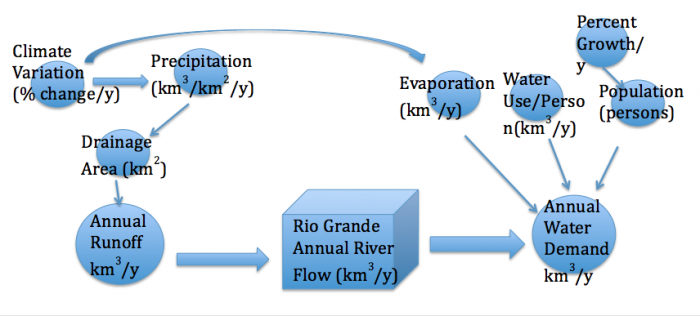Systems Thinking: Controls on Rio Grande River Flow to the Sea
Consider the water supplied by the Rio Grande River. In many years there is a trickle of water, or less, that reaches the sea. Why? Obviously, the water inputs are less than or equal to the outputs.
The Rio GrandActivate Your Learning
Construct a simple system diagram that represents the interplay between the "forces" that influence the flow of the Rio Grande River. Think about aspects of climate, population growth, and water demand as they influence Rio Grande River flow to the sea. Treat the Rio Grande flow/storage as a "reservoir" (total annual water availability in that system) and consider the most important inputs and outputs and the factors that drive them (refer to Module 1 for a background on systems thinking and systems diagrams). When you complete your system diagram on paper, click on the link to see what we expected you to include.
Click for answer.

Once you have studied the diagram, construct the "equations" for Annual Runoff and Annual Water Demand. Do the units match? How do you think this system would behave if the changes in inputs and outputs were large on a yearly basis?
Click for answer.
ANSWER:
Annual Runoff= Climate Variation x Annual Precipitation x Drainage Area
Annual Water Demand= Evaporation + (Water Use/Person x Percent Growth/y x Population)
If decreases in Runoff and increases in Water Demand were large (e.g. >1%/year) the Rio Grande would likely not flow to the sea. You could test this by putting realistic numbers into a model using these system relationships and running for several years.
